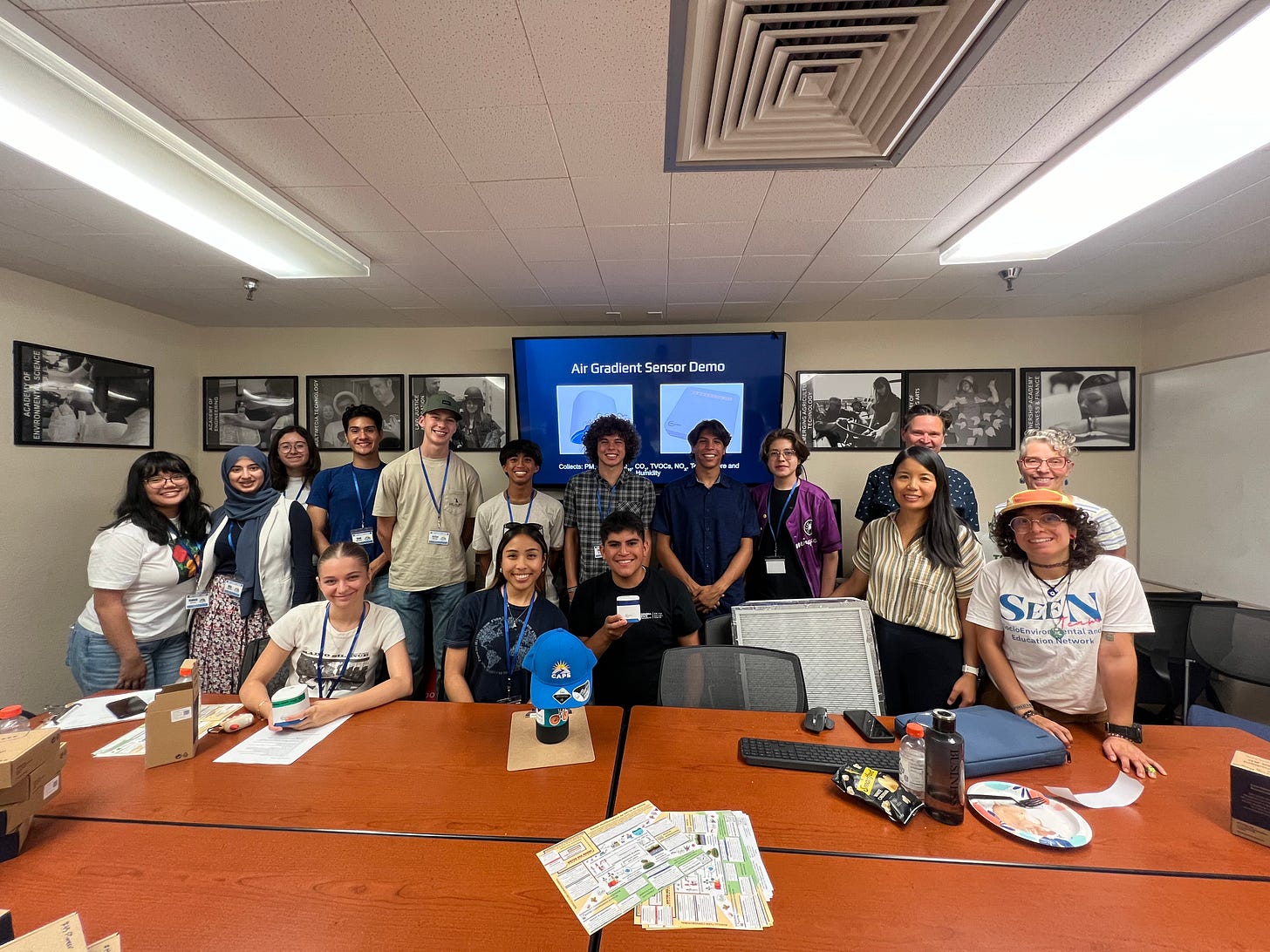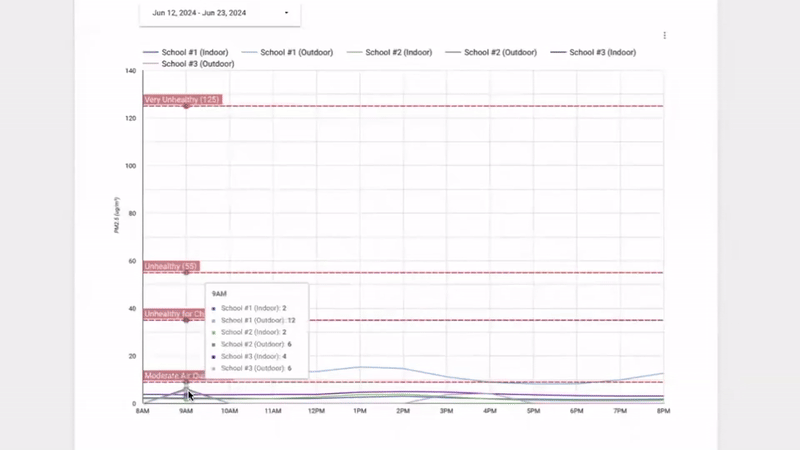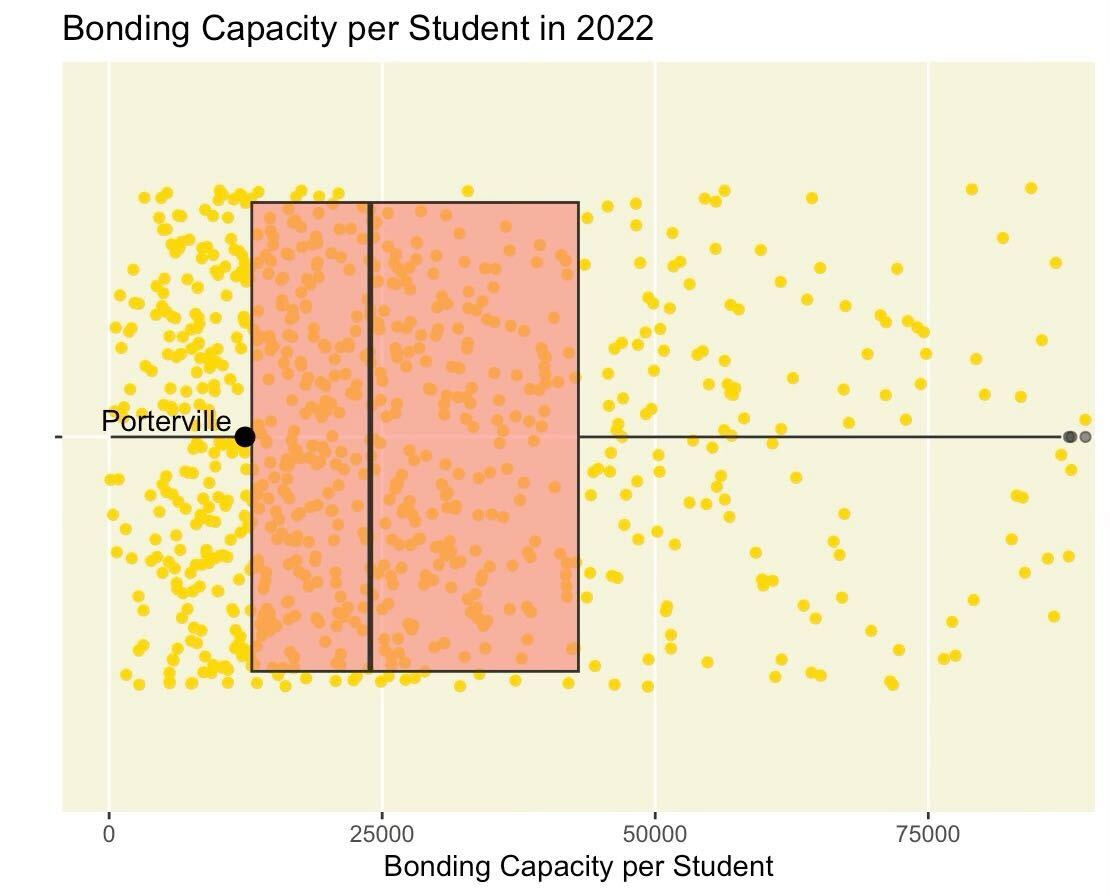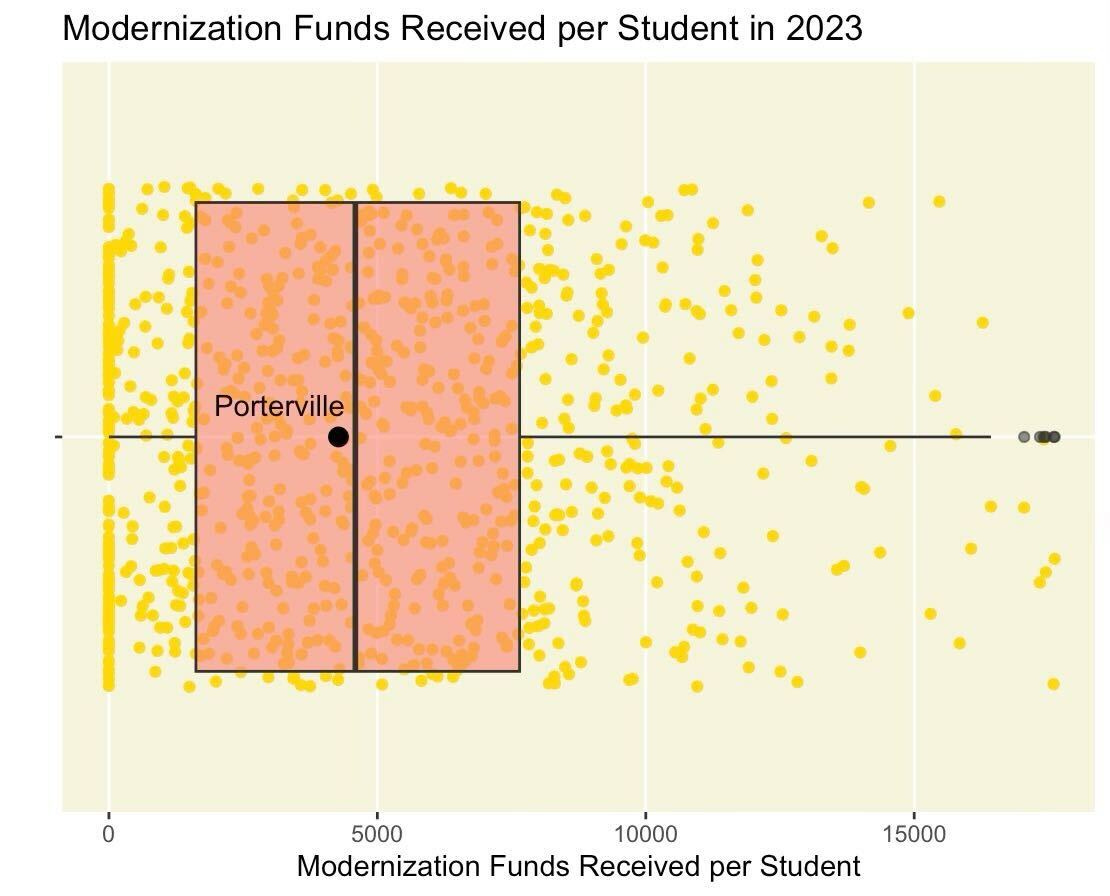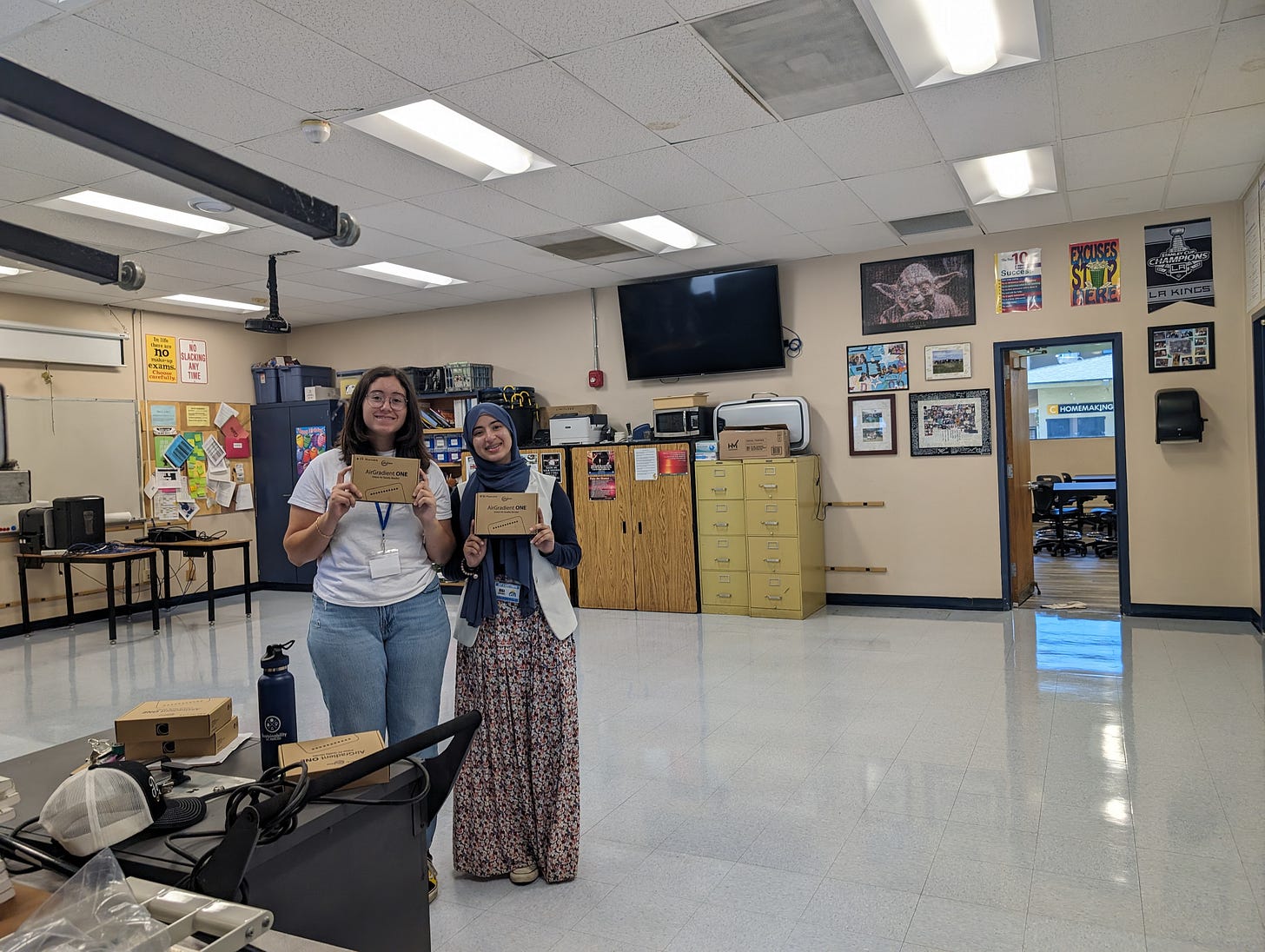From Smoke to Health: Improving Air Quality in California Schools
A Case Study of Porterville
Hazy orange skies and the scent of burning wood do not dictate a safe environment. Yet, they are a part of life in many at-risk communities during wildfire season, including Porterville, California.
With over 60,000 residents, Porterville is a medium-sized town situated on the Eastern side of the San Joaquin Valley in Tulare County, California. With low education and employment rates, the students and residents face many challenges. Moreover, the county ranks third in the worst year-round particle pollution in the United States.
As a lifelong resident, Judith Gomez, the lead author of this post and a student at Harmony Magnet Academy, recalls the emphasis placed on staying indoors during bouts of poor air quality. The main resource she remembers was the Air Quality Flag Program, wherein each day a flag is assigned a color from green (meaning healthy air) to maroon (meaning extremely unhealthy air). However, this generalized approach couldn't keep up with the frequent and rapid onset of wildfires.
Tulare County’s Vulnerability to Wildfires
Porterville and its surrounding areas are highly susceptible to wildfires; the naturally dry climate and long history of drought generate ample fuel. Climate change has only exasperated the area’s condition, with heat waves aiding in drying out the vegetation. For instance, the Creek Fire in 2020 burned over 379,000 acres of land, making it the 6th largest wildfire in California history.
According to CALFIRE, the California Department of Forestry and Fire Protection, firefighters have responded to more than 4,700 wildfires this year alone, which have burned over 600,000 more acres than in 2023. Specifically near Tulare County, the Trout and Long Fires (part of the SQF Lightning Complex) have burned almost 42,000 acres combined since mid-July. This heightened wildfire activity poses significant health risks, particularly to children in schools.
Wildfires release many toxic particles into the air. These air pollutants can negatively impact our health—from symptoms as simple as dry eyes to serious heart and lung issues. The impact can be even more severe for children as they breathe more air relative to their body weight and their lungs are still developing. Additionally, smoke may also impact student learning outcomes and test scores. This underscores the necessity of monitoring air quality in schools.
The collaboration between CEPP and CAPS
Given this heightened vulnerability, the Climate and Energy Policy Program (CEPP) is deploying low-cost air quality sensors to monitor indoor air quality in K-12 schools across California. Students spend significant portions of their days in school, making it crucial to monitor and compare indoor and outdoor environments. This enables schools to make better-informed decisions about student placement during wildfires and identify which rooms need upgraded filtration systems.
Judith was one of 12 interns from Climate Action Pathways for Schools (CAPS), a nonprofit that helps school districts lower their greenhouse gas emissions, who helped deploy air quality monitors throughout schools in the Porterville Unified School District in June 2024. Each team of four was responsible for installing five sensors at seven school sites. This deceptively simple task included a lot of trial and error, “It is surprisingly difficult to find the perfect spot for the indoor air quality (IAQ) sensors— there are many factors to take into account. It must be around breathing level, away from windows, and, most difficult, by an empty outlet.” added fellow intern Brylie Silva.
This is also a timely opportunity to evaluate how energy-efficient upgrades impact IAQ in schools. In 2023, Porterville Unified School District was granted over $5.8 million under the US Department of Energy Renew America’s Schools Grant. The district will use this grant to upgrade to high efficiency lighting, building automation systems, and new heating, ventilation, and air conditioning (“HVAC”) units in seven schools.
Replacing HVAC units will not only reduce energy consumption but also improve air filtration; by monitoring IAQ before and after the upgrades, we can gather valuable data on the effectiveness of these systems in reducing airborne pollutants, particularly during wildfire season—when outdoor air quality worsens considerably.
This initiative aligns with broader projects aimed at protecting K-12 students in California against wildfire smoke and minimizing energy usage, such as the Efficient and Healthy Schools Program. Additionally, opportunities such as the Bright Schools Program and School Bus Replacement Program can further provide funding for implementing energy-saving measures and replacing old diesel buses with electric ones.
Supporting CA schools with indoor air quality data
In addition to their research, members of CEPP lead a wildfire smoke policy lab at Stanford. Previous students in the lab observed that school buildings exhibit the highest rates of infiltration (outdoor air entering) of any building type in the US. This observation aligns with a report by the Federal Reserve Bank of San Francisco, which found that smoke exposure among students has increased dramatically in recent years. Consequently, students in the policy lab noted a lack of PurpleAir and other air quality sensors inside schools and public buildings.
In response, CEPP has deployed a network of 112 sensors across 19 Californian schools. To help schools visualize the data, the team created interactive data dashboards, displaying figures on particulate matter, carbon dioxide, air quality index, temperature, and humidity. The goal is for schools to access real-time updates and compare data across classrooms and schools within the same district.
Below is an example of a chart showing average hourly PM2.5 across three schools in Porterville.
This video shows PM2.5 throughout an average day between June 24th and July 12th categorized by AQI threshold categories. For instance, at 2pm, the average PM2.5 at School #1 was 3 µg/m³ indoors and 10 µg/m³ outdoors. PM2.5 refers to fine particulate matter that can penetrate the respiratory system, posing significant health risks, especially for children.
Displaying this information enables schools to identify daily and hourly trends, aiding in pinpointing issues such as air leakage, insufficient ventilation, or practices like opening windows and doors. By comparing outdoor and indoor sensor values across rooms, CEPP hopes schools can utilize this data to implement changes and allocate resources, such as portable HEPA filters, fostering a healthier and more conducive learning environment for all.
Potential IAQ Policies; Where Porterville Fits in
Although the $5.8 million DOE grant will significantly improve the energy infrastructure of Porterville schools, the district still faces insufficient state funding to address all infrastructural issues.
For context, the California's School Facility Program (SFP) is responsible for funding school building modernization projects across different districts within the state. Historically, the SFP has distributed funds inequitably, giving wealthier school districts more money and lower-wealth districts less. This disparity is due to the distribution model being influenced by higher property values, favoring wealthier districts.
According to the Center for Cities + Schools, "Districts can ask voters to approve local bond measures up to 2.5% of assessed property values (or 1.25% for elementary and high school districts) ... The SFP then matches that funding — 60% of total project costs to the district's 40%." Consequently, wealthier districts receive larger matches due to their ability to raise more money.
Lower-wealth districts like Porterville often struggle to raise matching funds. In 2022, Porterville was ranked in the lowest quartile for bonding capacity per student. Despite this, the district was also ranked in the second lowest quartile for modernization funds received per student in 2023.
Figures: Box plots of Bonding Capacity per Student in 2022 and Modernization Funds Received per Student in 2023
Data source: Center for Cities + Schools
Nevertheless, some public advocates believe that there are ways to address this funding problem. More specifically, AB 247 is a state bond that aims to raise money for the SFP, which is running out of funds. Recently, it was approved by the state legislature to be on the ballot for November. Education policy expert Sara Hinkley from the Center for Cities + Schools believes that AB 247 would help ensure that the SFP has enough money to allocate to districts at higher risk of air pollution like Porterville. She argues for a more equitable distribution of SFP funds to meet the needs of such districts.
At the federal level, organizations, such as the American Academy of Pediatrics, support the proposed Indoor Air Quality and Healthy Schools Act. This bill aims to introduce comprehensive IAQ legislation, expand the work of the EPA Indoor Division, and implement an IAQ-safe certification process for building construction, maintenance, operation, and design. Additionally, it mandates a national survey to collect IAQ data across schools and childcare facilities, shaping guidelines, best practices, and technical assistance services.
To keep track of these bills or get involved, you can follow SB 28 within the California legislature and HR 9131 in the federal legislature as well as voice your opinions about these bills to your local assembly members.
More Ways to Get Involved: How Students and Schools Can Help
This opportunity doesn’t have to be exclusive. There are many measures that students can take to keep themselves safe from air pollutants. The first step would be educating themselves and their peers about the dangers of these particles; sharing their knowledge with their community raises awareness and encourages collective action.
Schools can purchase their own air quality monitors and install them in their classrooms; many provide apps to monitor the air quality in real time. With this information, the administration can take action to improve indoor air quality. Schools can also collaborate with local organizations, such as the SocioEnvironmental and Education Network (SEEN), which offers free bilingual workshops on constructing low-cost and effective air filters.
Access to clean air is a fundamental right that many communities lack. By supporting initiatives that improve air quality and resilience against wildfires, we can make a lasting impact on the health and well-being of our communities.
Together, we can work to ensure that everyone, regardless of their location or socioeconomic status, can breathe safely and live healthier lives.
Jessica Yu joined the Climate and Energy Policy Program as a Postdoctoral Fellow in September 2022. With a focus on interdisciplinary solutions, her research addresses the public health impacts of wildfire smoke on vulnerable populations.







